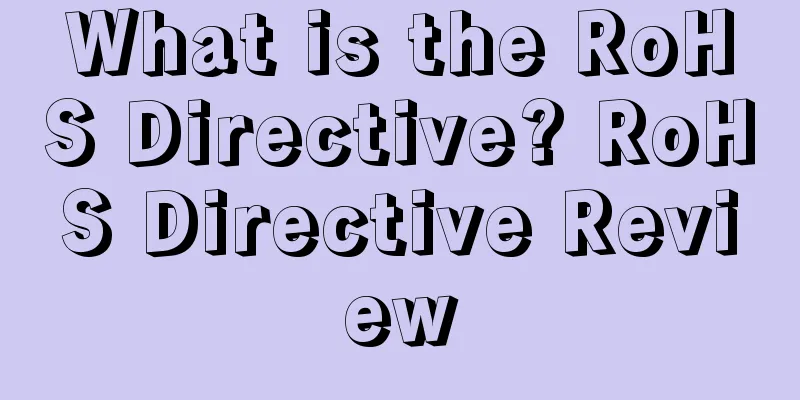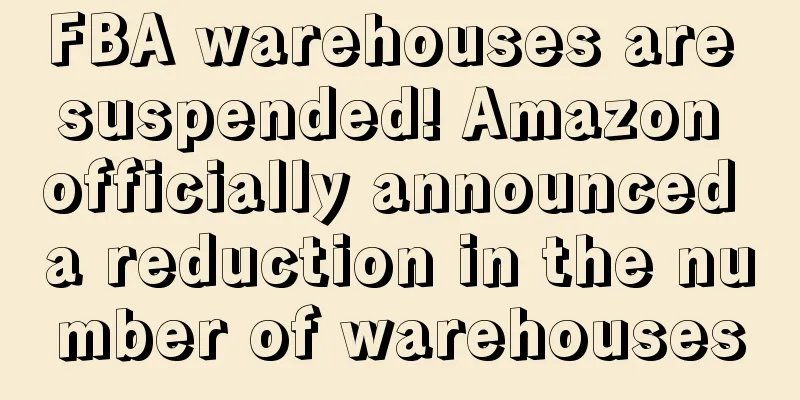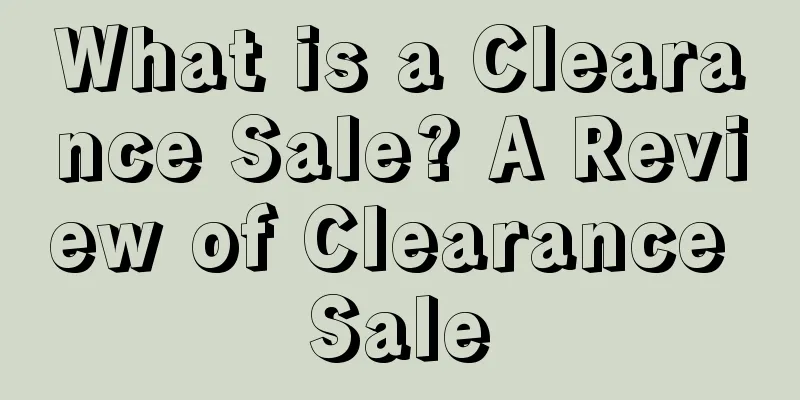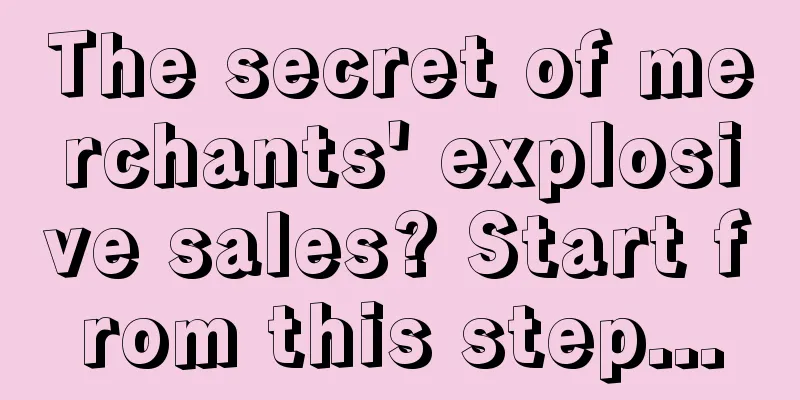Interpretation of Amazon's restricted products policy and a complete guide to appealing violations!
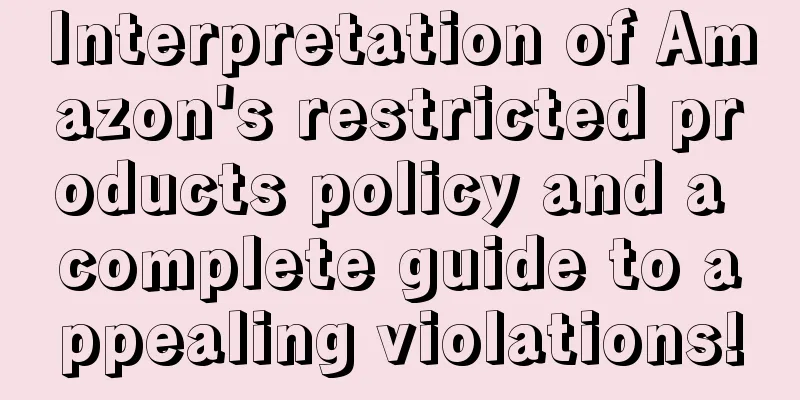
|
0 1 What is the restricted products policy? To ensure that buyers can feel safe and secure when shopping on the Amazon platform, Amazon has strict requirements for all products sold on the platform. All products sold on Amazon must comply with all relevant laws and regulations and the policies established by Amazon. This means that any illegal, unsafe products, as well as other products clearly listed on Amazon's "Restricted Products" page (including those that can only be purchased with a doctor's prescription) are strictly prohibited from sale. Even if certain products are listed as "Examples of Permitted Products", all products and related information must fully comply with applicable legal requirements. As a seller on Amazon, you are responsible for ensuring that the products you sell are in full compliance with all local, state, and federal laws and regulations, as well as Amazon's policies. If the products you sell violate these laws and regulations or Amazon's policies (including those listed on the "Restricted Products" page), Amazon will take appropriate corrective actions as appropriate. These measures may include, but are not limited to, immediate suspension or permanent termination of your selling privileges. In addition, selling illegal or unsafe products may also lead to legal action, which includes not only civil lawsuits, but also criminal penalties. Therefore, as a seller, you must always remain highly vigilant and ensure that your products comply with all relevant laws and regulations and Amazon policies to maintain the good reputation of the platform and the rights of buyers. 0 2 How do I know if the products I sell are restricted? 1. Common restricted product categories include but are not limited to the following examples: Prescription drugs Illegal drugs (for example, cocaine or marijuana) Unapproved drugs ● Guns and explosives Ammunition Interference equipment ●E-cigarettes ●Hormone products ●Offensive weapon accessories Medical equipment ● False claims (e.g., “can cure cancer”) Sellers can query the restricted product policy of their sales site through the following paths: ●Log in to the Amazon Seller Platform, click "Help > Get Help Resources" in the upper right corner, and click "Program Policies > 'Sell on Amazon' Fee Price List > Categories, Products and Product Restrictions > Restricted Products" at the bottom of the page. 2. Before listing, sellers must investigate the restrictions on the products they sell! The regulations of the "restricted goods" policies of different sites may be different, so sellers need to log in to the corresponding site to view the relevant policies and check local laws and regulations to determine whether the products can be sold on the local site. Notice! The restricted product examples listed above only apply to the currently published Amazon policies and local laws and regulations. Sellers are responsible for confirming before listing products. At the same time, sellers should keep abreast of the latest information on restricted products, such as updates to local laws, regulations and Amazon policies. These contents may change at any time. For international sellers, it is very important to regularly check whether the inventory complies with local site regulations. If you appeal due to violations of restricted products, the following reasons will not be accepted (the content is for reference only): Case 1 The sellers believed that the responsibility lay with the supplier for not informing them that the products they were selling were restricted goods. Case 2 Sellers believe that they should not be held responsible for violations. They listed illegal products because they observed that other sellers were selling similar products on the Amazon platform, or because they listened to advice from other channels. They did not read the "restricted products" policy carefully, nor did they conduct a detailed investigation of the products, and directly put the products on the shelves for sale. Although sellers may obtain relevant advice and information about product listings from various channels, sellers have the responsibility and obligation to identify whether the products they want to list are restricted products. They need to carefully read and understand Amazon's relevant policies to ensure that the products they sell comply with the platform's regulations and avoid violations. 0 3 Common restricted product violation types and cases 1. The product itself causes the violation Seller A sold a device called a frequency therapy device on the US site, but according to the "Medical Devices and Accessories" policy of the Amazon platform, such products are explicitly prohibited from being sold. Therefore, due to violating this policy, the frequency therapy device was marked as a restricted product violation. 2. Product ingredients lead to violations Seller B listed an odor eliminator, specifically a mothball, on the Spanish site. During the listing process, Seller B believed that the mothball belonged to the category of daily necessities. However, according to the relevant regulations of the Spanish site, products containing naphthalene and other types of fungicides are expressly prohibited from being sold. Therefore, the mothball was marked as a restricted product violation and could not be sold normally on the platform. 3. Violations caused by listing products without review/approval Seller C successfully synchronized a baby skin care product from the French site to the US site using the "Build International Product Information" tool. However, after the product was put on the shelves, Seller C was surprised to find that the product was marked as a restricted product violation on the US site. After a detailed investigation and understanding, Seller C suddenly realized that although this type of baby skin care product is allowed to be sold on the US site, the prerequisite is that the seller must provide the corresponding document certification before it can be successfully put on the shelves for sale. 4. Images cause violations The product sold by Seller D is classified as a toy gun, but the photo on the product detail page is so realistic that it looks indistinguishable from a real gun. This highly realistic appearance caused the product to be incorrectly labeled as a "weapon," violating the platform's regulations on restricted products. 5. Indirect words and sensitive words lead to violations Seller E's products on the US site were mistakenly marked as "drug" restricted product violations. Although the seller has insisted on submitting disputes, detailing that the products sold have nothing to do with drugs and that there is no information about drugs in the titles and pictures of the products, unfortunately, these disputes have never been accepted by the review team. After in-depth investigation and analysis, Seller E found that its product detail page did contain some keywords for common drug varieties mentioned in the "Drugs and Drug Paraphernalia" policy. These keywords may be the reason why the product was mislabeled. In order to help other sellers avoid similar mislabeling issues, it is recommended that you search for the "Drugs and Drug Paraphernalia" policy on the help page after logging in to the Amazon Seller Central for more details and guidance. In this way, you can ensure that your product detail page does not contain any keywords that may cause misunderstanding or violation, thus avoiding unnecessary trouble and losses. 0 4 Restricted Products Violation Appeal Process When an ASIN is flagged for a restricted product violation or faces an account-level restricted product violation, sellers can prepare an appeal by following the steps below. 1. Investigate the root cause of the problem ●Find the violating ASIN; ● Carefully review Amazon’s “Restricted Products” policy on the Amazon Seller Platform Help page as well as local laws and regulations; ● Check the ASIN listing information to determine the source of the violation, such as images, sensitive words, categories, ingredients, or even the product itself; ●Sellers should review their own operational processes to confirm whether there are any loopholes in the process from product selection, editing product information to subsequent restricted product inspection. 2. Take appropriate steps for subsequent appeals or disputes Scenario 1: Admitting a violation Sellers must be aware that deleting or removing the offending ASIN without appealing will not bring the product into compliance or resolve the restricted product policy violation. Sellers should refer to the process below and take appropriate measures. If your products are marked as restricted products violations at the account level by Amazon, it is important to deal with the remaining inventory in the FBA warehouse before you submit your appeal letter. Specifically, you need to submit an FBA warehouse inventory removal order to remove these products from the warehouse. This is done to ensure that all potentially problematic products have been cleared from Amazon's warehouse before you submit your appeal. As a seller, before submitting an appeal, you need to carefully check all the products in your inventory, including those that are selling and those that are not selling. You must ensure that these products do not have any violations and fully comply with Amazon's restricted product policy requirements. This step is crucial because if you do not conduct a detailed check, it may cause your account to be marked as a repeat restricted product violation. Once this happens, the appeal process will become more difficult and may even result in your account being unable to be reactivated. Therefore, please take this inspection process seriously and ensure that all your products comply with Amazon's regulations to avoid any problems in the future. Only after confirming that all products meet the requirements can you submit an appeal letter to strive to restore your account to normal status. Case 2: Not admitting violation If you have confirmed after careful and detailed investigation that your product is not a restricted product on the Amazon platform, and you have ensured that the product details page, product category, and other related information do not violate any restricted product policies, then you can choose to initiate the appeal process through the non-admission violation channel on the "Submit an appeal" page. When submitting an appeal, the source of the non-violation information you provide must be authoritative or directly prove that your product is in full compliance with Amazon's "restricted product" policy and the relevant provisions of local laws and regulations. If you need any help or have other questions during the appeal process, you can find the "Contact me now" button on the "Account Status" page on the Amazon Seller Platform and click it to get in touch with an Amazon specialist. In this way, you can get more information about the appeal process and related requirements to ensure that your appeal can proceed smoothly and receive a timely response. |
<<: New opportunities in cross-border e-commerce: Do you really understand the Russian market?
Recommend
BRS union rejects temporary contract! US rail strike risks re-emerge!
<span data-docs-delta="[[20,"获悉,据外媒报道,10月2...
The US has increased tariffs on China! Is this the darkest moment for sellers?
Recently, the United States has once again dealt a...
What is Quintly? Quintly Review
Quintly is an analytics-only tool that connects to...
What is DealAm? DealAm Review
DealAm.com is the first North American discount in...
"It's hard to find a store"? Walmart is investing heavily in e-commerce business
The growth rate of Walmart's online business ...
What is Zooplus? Zooplus Review
Zooplus is a pet supplies mall that specializes in...
What is FBA Small and Light? FBA Small and Light Review
FBA Small and Light is a delivery program designed...
Shocking news! SHEIN headquarters may move to Singapore, founder suspected of "changing nationality"?
The sea presses down on the bamboo branches, whic...
Black Friday ban wave is coming! Comments are gone overnight, and the dream of booming orders during the peak season is shattered!
▶ Video account attention cross-border navigation ...
Who will be the future king of e-commerce? Will Alibaba surpass Amazon one day?
Amazon's sales are 4 times that of Alibaba (in...
Temu is "crazy about fines"? Many sellers have been deducted more than 100,000!
It is learned that according to data from Similarw...
Consumer willingness rises: Americans' holiday gift purchase budget exceeds $1,000 for the first time
According to a CNBC poll, Americans plan to spend ...
Should I choose a small company for my first job in Amazon operations?
The environment has a huge impact on people, espec...
What is thezenstitch? thezenstitch review
Thezenstitch was founded in 2018 as a factory and ...
What is My Seller Pal? My Seller Pal Review
My Seller Pal is a comprehensive, affordable Amazo...


